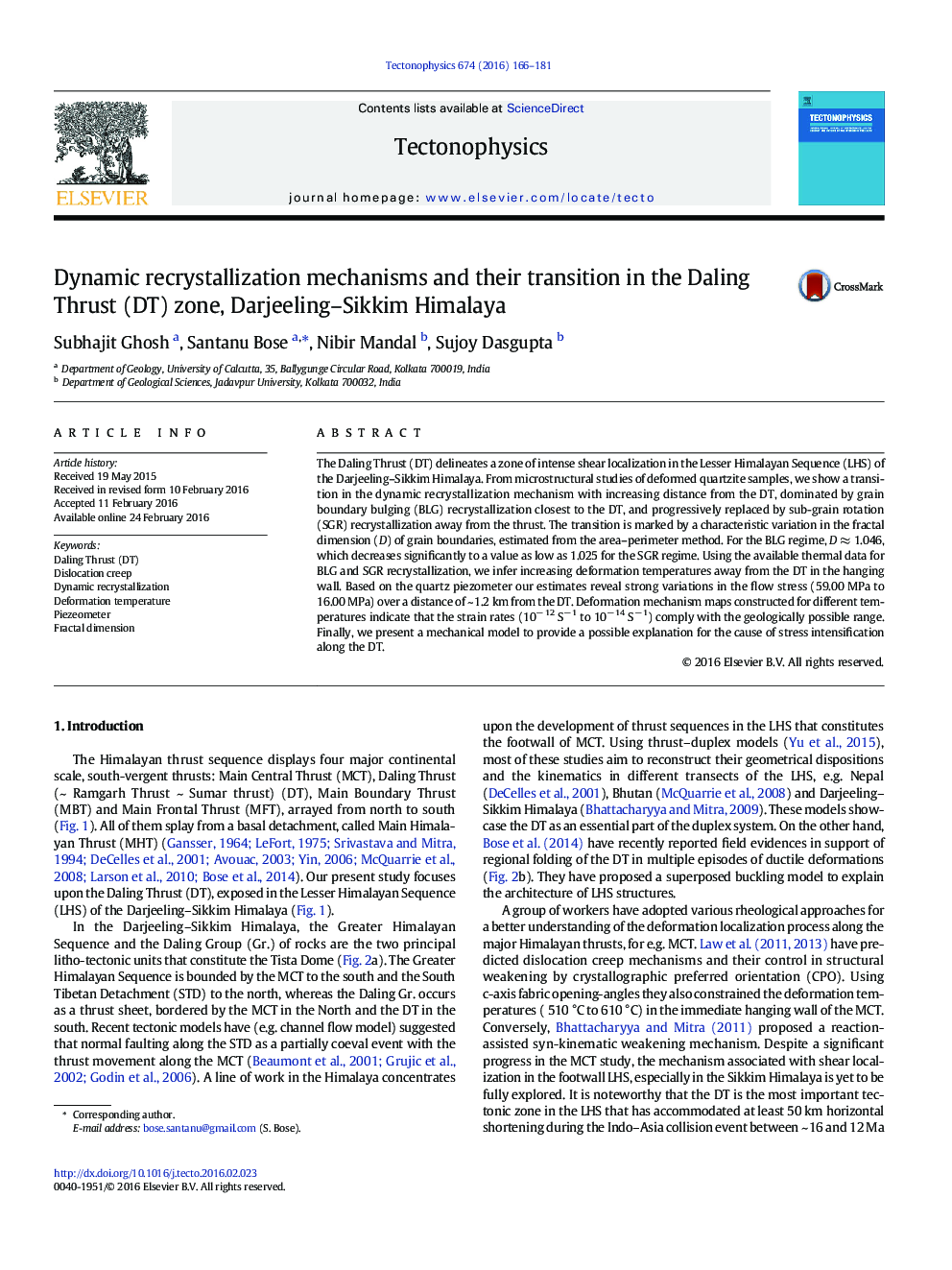| Article ID | Journal | Published Year | Pages | File Type |
|---|---|---|---|---|
| 6433474 | Tectonophysics | 2016 | 16 Pages |
â¢A first time report of the deformation mechanisms responsible for ductile shearing along DTâ¢BLG to SGR transition of the dynamic recrystallization away from DTâ¢Maximum stress localization along DT, reflected from the BLG mechanismâ¢Characteristic variations of fractal dimension (D) of recrystallized quartzâ¢Estimation of deformation temperature in shear localization
The Daling Thrust (DT) delineates a zone of intense shear localization in the Lesser Himalayan Sequence (LHS) of the Darjeeling-Sikkim Himalaya. From microstructural studies of deformed quartzite samples, we show a transition in the dynamic recrystallization mechanism with increasing distance from the DT, dominated by grain boundary bulging (BLG) recrystallization closest to the DT, and progressively replaced by sub-grain rotation (SGR) recrystallization away from the thrust. The transition is marked by a characteristic variation in the fractal dimension (D) of grain boundaries, estimated from the area-perimeter method. For the BLG regime, D â 1.046, which decreases significantly to a value as low as 1.025 for the SGR regime. Using the available thermal data for BLG and SGR recrystallization, we infer increasing deformation temperatures away from the DT in the hanging wall. Based on the quartz piezometer our estimates reveal strong variations in the flow stress (59.00 MPa to 16.00 MPa) over a distance of ~ 1.2 km from the DT. Deformation mechanism maps constructed for different temperatures indicate that the strain rates (10â 12 Sâ 1 to 10â 14 Sâ 1) comply with the geologically possible range. Finally, we present a mechanical model to provide a possible explanation for the cause of stress intensification along the DT.
